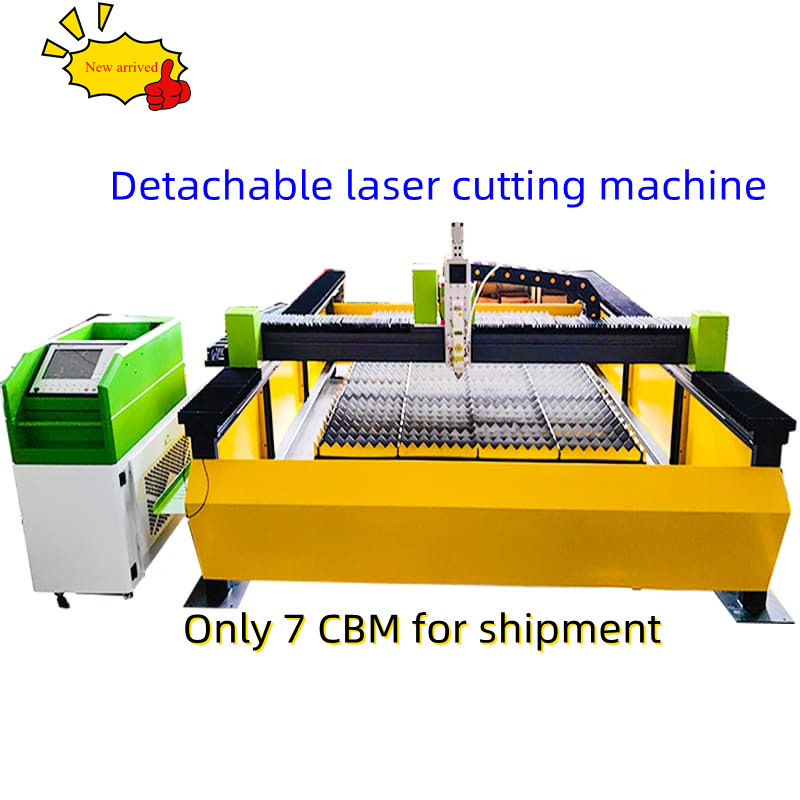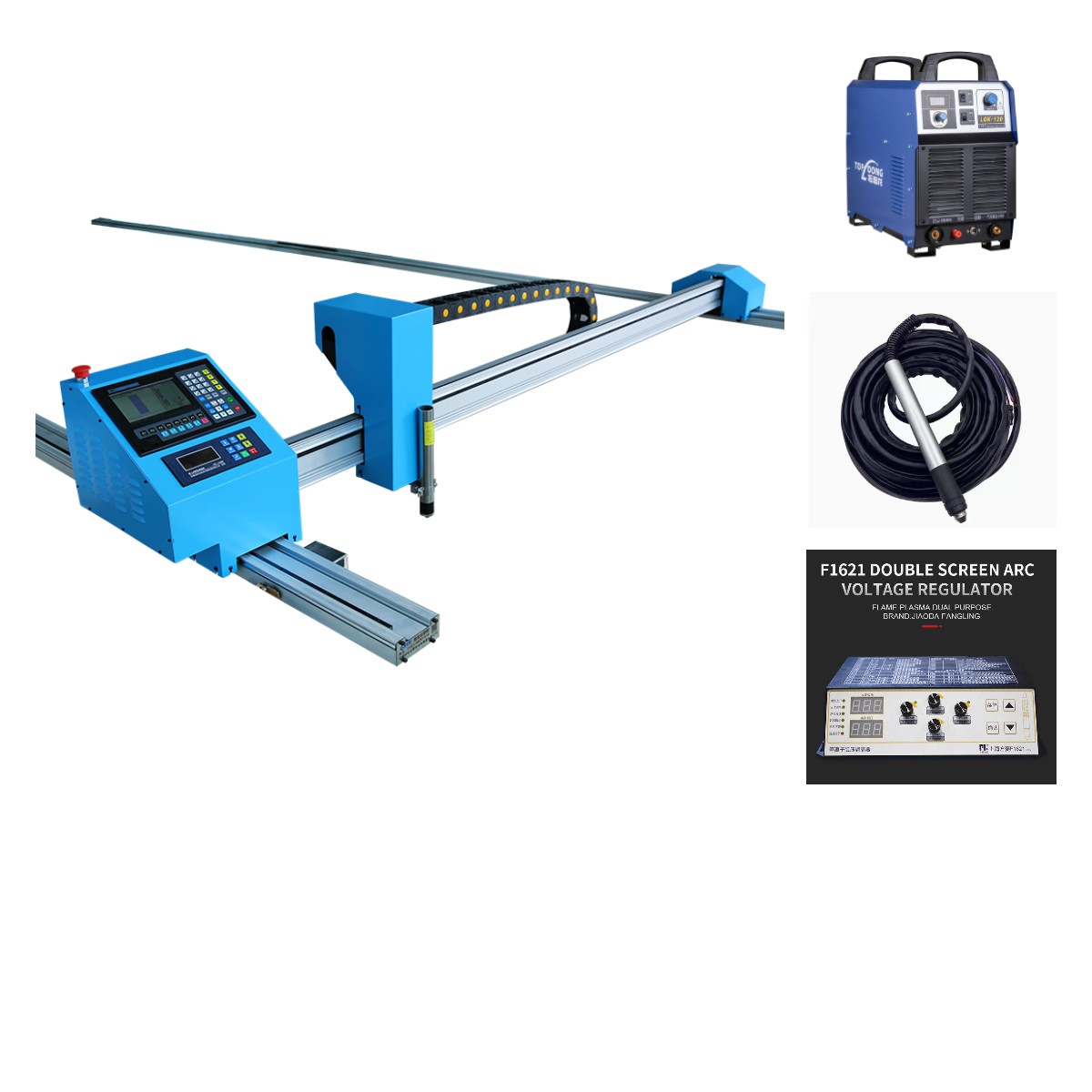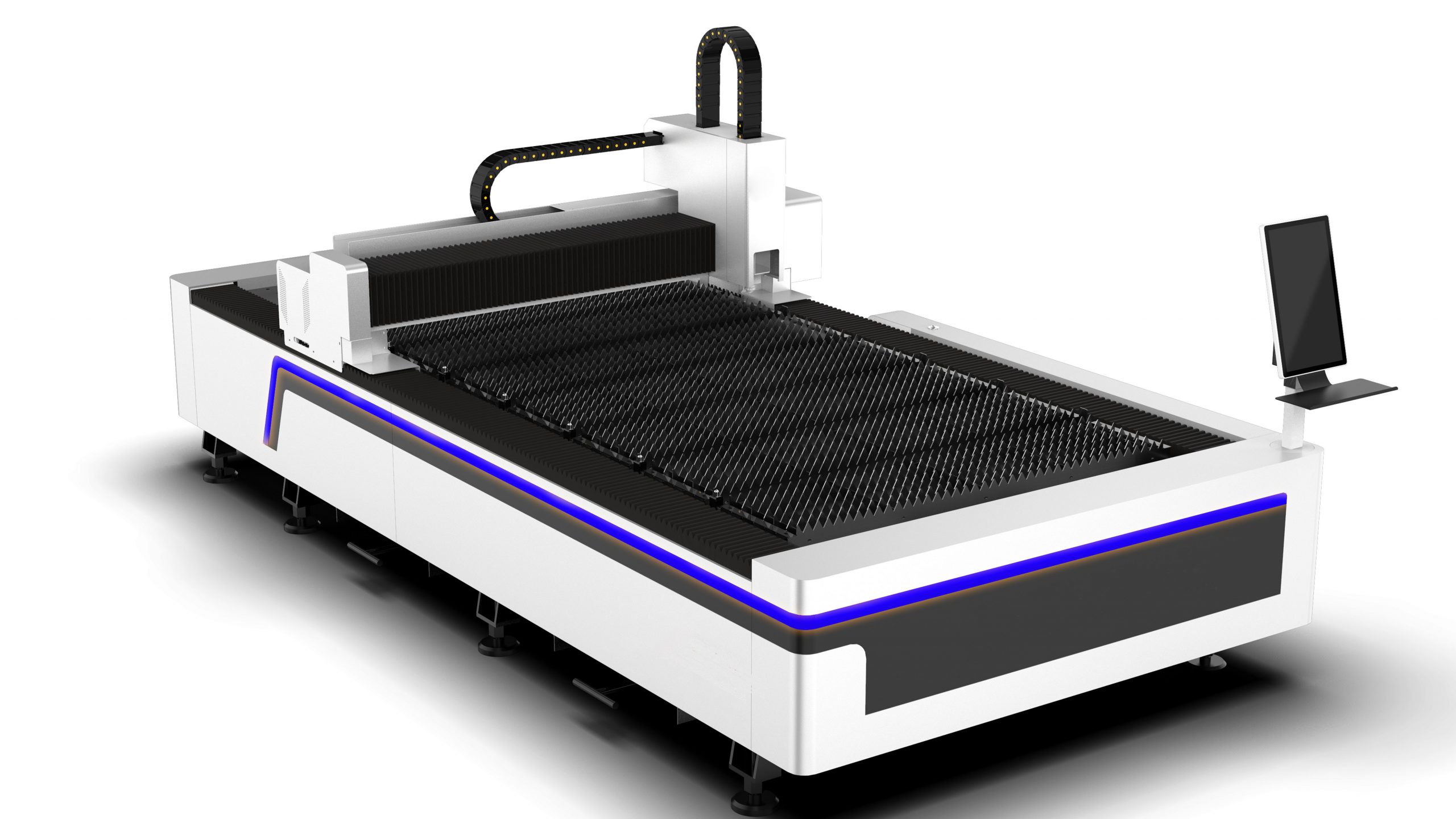Laser cutting and plasma cutting are two prominent technologies in the field of industrial cutting. As businesses seek more efficient and precise cutting solutions, there is curiosity about whether laser cutting will eventually replace plasma cutting.In this comprehensive article, we will explore the industries where these machines find applications, examine the key differences between them, and discuss their respective advantages and disadvantages. Furthermore, we will provide insights into the potential future developments of laser cutting and plasma cutting technologies.
 Section 1: Industries Utilizing Laser Cutting and Plasma Cutting
Section 1: Industries Utilizing Laser Cutting and Plasma Cutting
1. Which industries need laser cutting machine?
Laser cutting machine are widely used in various industries, including:
Metal Fabrication: Fiber Laser cutting machine is extensively employed in metal fabrication industries for precise cutting of stainless steel, aluminum, and mild steel.
Automotive Industry: Laser cutting machine plays a crucial role in the production of automotive components such as chassis parts, body panels, and exhaust systems.
Electronics and Electrical Industry: Laser cutting machines are utilized for precise cutting of circuit boards, electrical enclosures, and electronic components.
Aerospace and Aviation: Fiber Laser cutting machine is employed in the aerospace sector for cutting intricate parts, aircraft panels, and turbine blades.
Textile and Apparel: Laser cutting machines are used in the textile industry for cutting fabrics, leather, and other materials, enabling intricate designs and patterns.
 Section 1: Industries Utilizing Laser Cutting and Plasma Cutting
Section 1: Industries Utilizing Laser Cutting and Plasma Cutting1. Which industries need laser cutting machine?
Laser cutting machine are widely used in various industries, including:
Metal Fabrication: Fiber Laser cutting machine is extensively employed in metal fabrication industries for precise cutting of stainless steel, aluminum, and mild steel.
Automotive Industry: Laser cutting machine plays a crucial role in the production of automotive components such as chassis parts, body panels, and exhaust systems.
Electronics and Electrical Industry: Laser cutting machines are utilized for precise cutting of circuit boards, electrical enclosures, and electronic components.
Aerospace and Aviation: Fiber Laser cutting machine is employed in the aerospace sector for cutting intricate parts, aircraft panels, and turbine blades.
Textile and Apparel: Laser cutting machines are used in the textile industry for cutting fabrics, leather, and other materials, enabling intricate designs and patterns.

In what industries can CNC plasma cutting machine be used?
CNC Plasma cutter finds applications in various industries, including:Metal Construction and Fabrication: CNC Plasma cutting machines are widely used in metal construction for cutting structural components, beams, and columns.
Shipbuilding: CNC Plasma cutter employed in the shipbuilding industry for cutting thick metal plates and ship components.
Heavy Equipment Manufacturing: Gantry CNC Plasma cutting machine is utilized for cutting heavy machinery components, such as excavator parts and bulldozer blades.
Automotive Repair and Restoration: Plasma cutting machines are used for automotive repair and restoration, particularly for cutting and shaping metal frames and panels.
Scrap and Recycling Industry: Plasma cutting machine is used for cutting and processing scrap metal in recycling facilities.
Shipbuilding: CNC Plasma cutter employed in the shipbuilding industry for cutting thick metal plates and ship components.
Heavy Equipment Manufacturing: Gantry CNC Plasma cutting machine is utilized for cutting heavy machinery components, such as excavator parts and bulldozer blades.
Automotive Repair and Restoration: Plasma cutting machines are used for automotive repair and restoration, particularly for cutting and shaping metal frames and panels.
Scrap and Recycling Industry: Plasma cutting machine is used for cutting and processing scrap metal in recycling facilities.

Section 2: What is the differences between Laser Cutting and Plasma Cutting ?
Working Principle:. CNC laser cutting machine is to use high power density laser beam to scan the material surface, heat the material to thousands to tens of thousands of degrees Celsius in a very short time, make the material melt or gasify, and then blow the melted or gasified material away from the cutting seam with high pressure gas, so as to achieve the purpose of cutting materials. In laser cutting, because the traditional mechanical knife is replaced by invisible light beam, the mechanical part of the laser cutting head has no contact with the work, and will not scratch the work surface in the work; The laser cutting speed is fast, the incision is smooth and smooth, generally without subsequent processing; The cutting heat affected zone is small, the sheet deformation is small, and the cutting seam is narrow (0.1 mm ~ 0.3 mm); There is no mechanical stress and shear burr in the incision; High machining accuracy, good repeatability, no damage to the material surface; NC programming, can process any plan.
CNC plasma cutting machine is a kind of thermal cutting equipment, its working principle is to use the heat of high temperature plasma arc to make the metal partial melting at the workpiece incision, and use the momentum of high-speed plasma to eliminate the molten metal to form a cutting method.
Cutting Capabilities:Panel laser cutting machine excel at precise and intricate cuts, capable of achieving high levels of detail. It is suitable for thin to medium-thickness materials, but their efficiency decreases for thicker metals. Plasma cutting machines are better suited for cutting thicker materials, including thick metal plates, with higher cutting speeds. However, the cut quality may be comparatively lower, with wider heat-affected zones and rougher edges.
Material Compatibility: CNC Laser cutting machine can cut a wide range of materials, including metals, non-metals, and organic materials like wood and acrylic. CNC Plasma cutting machine is primarily designed for cutting conductive metals, such as steel, stainless steel, and aluminum.
Cost Considerations: Laser cutting machines generally have higher upfront costs and maintenance expenses due to the complexity of laser technology and optics involved.
CNC plasma cutting machine is a kind of thermal cutting equipment, its working principle is to use the heat of high temperature plasma arc to make the metal partial melting at the workpiece incision, and use the momentum of high-speed plasma to eliminate the molten metal to form a cutting method.
Cutting Capabilities:Panel laser cutting machine excel at precise and intricate cuts, capable of achieving high levels of detail. It is suitable for thin to medium-thickness materials, but their efficiency decreases for thicker metals. Plasma cutting machines are better suited for cutting thicker materials, including thick metal plates, with higher cutting speeds. However, the cut quality may be comparatively lower, with wider heat-affected zones and rougher edges.
Material Compatibility: CNC Laser cutting machine can cut a wide range of materials, including metals, non-metals, and organic materials like wood and acrylic. CNC Plasma cutting machine is primarily designed for cutting conductive metals, such as steel, stainless steel, and aluminum.
Cost Considerations: Laser cutting machines generally have higher upfront costs and maintenance expenses due to the complexity of laser technology and optics involved.
Plasma cutting machines are often more cost-effective in terms of equipment and maintenance.


Section 4: what is the future of the laser cutting and plasma cutting machine?
The future of laser cutting and plasma cutting technologies appears promising, with ongoing advancements and research.
Laser Cutting: Future developments may include increased laser power and cutting speeds, enhancedautomation and integration capabilities, and expanded material compatibility. These advancements will likely extend the applications of laser cutting in industries such as aerospace, electronics, and automotive manufacturing. Additionally, advancements in fiber laser technology may lead to more cost-effective laser cutting solutions.
Plasma Cutting: Ongoing research focuses on improving cut quality, reducing heat-affected zones, and enhancing overall efficiency in plasma cutting. Future developments may include advanced plasma torch designs and improved gas control systems to achieve higher precision and cleaner cuts. Additionally, advancements in plasma cutting technology may result in extended cutting capabilities, allowing for higher precision in thicker materials.
Conclusion :
While it is difficult to predict the complete replacement of plasma cutting by laser cutting, both technologies will continue to play important roles in the industrial cutting landscape. Laser cutting’s precision and versatility make it ideal for intricate applications, while plasma cutting’s speed and cost-effectiveness make it well-suited for heavy-duty tasks. As industries demand more efficient and precise cutting solutions, laser cutting and plasma cutting technologies will evolve, providing enhanced capabilities and driving innovation across various sectors.

Section 3: Advantages and Disadvantages
Laser Cutting Advantages:
Superior Precision: Laser cutting provides high accuracy and intricate detailing, enabling the creation of complex geometries.
Versatility: Laser cutting machines can work with a wide range of materials, expanding their applications across different industries.
Clean Cuts: Laser cutting leaves minimal residue, reducing the need for post-processing and producing clean, burr-free edges.
Laser Cutting Disadvantages:Limited Thickness: Laser cutting is more suitable for thinner materials, and its efficiency decreases for thicker metals.
Higher Costs: Laser cutting machines have higher upfront costs and maintenance expenses due to the complexity of laser technology and optics.
Laser Cutting Advantages:
Superior Precision: Laser cutting provides high accuracy and intricate detailing, enabling the creation of complex geometries.
Versatility: Laser cutting machines can work with a wide range of materials, expanding their applications across different industries.
Clean Cuts: Laser cutting leaves minimal residue, reducing the need for post-processing and producing clean, burr-free edges.
Laser Cutting Disadvantages:Limited Thickness: Laser cutting is more suitable for thinner materials, and its efficiency decreases for thicker metals.
Higher Costs: Laser cutting machines have higher upfront costs and maintenance expenses due to the complexity of laser technology and optics.
Plasma Cutting Advantages:
Cutting Speed: Plasma cutter excels in rapid cutting of thick metals, making it highly efficient for heavy-duty applications.
Cost-Effective: Plasma cutting machine tends to have lower upfront costs and maintenance expenses compared to laser cutting machine.
Versatility with Conductive Metals: CNC Plasma cutting machine is specifically designed for cutting conductive metals like steel, stainless steel, and aluminum.
Plasma Cutting Disadvantages:
Lower Precision: CNC Plasma cutter may result in wider heat-affected zones and rougher cut edges compared to laser cutting.Limited Material Compatibility: Portable Plasma cutter is primarily suitable for cutting conductive metals and may not be as versatile with non-metal materials.
Cutting Speed: Plasma cutter excels in rapid cutting of thick metals, making it highly efficient for heavy-duty applications.
Cost-Effective: Plasma cutting machine tends to have lower upfront costs and maintenance expenses compared to laser cutting machine.
Versatility with Conductive Metals: CNC Plasma cutting machine is specifically designed for cutting conductive metals like steel, stainless steel, and aluminum.
Plasma Cutting Disadvantages:
Lower Precision: CNC Plasma cutter may result in wider heat-affected zones and rougher cut edges compared to laser cutting.Limited Material Compatibility: Portable Plasma cutter is primarily suitable for cutting conductive metals and may not be as versatile with non-metal materials.

Section 4: what is the future of the laser cutting and plasma cutting machine?
The future of laser cutting and plasma cutting technologies appears promising, with ongoing advancements and research.
Laser Cutting: Future developments may include increased laser power and cutting speeds, enhancedautomation and integration capabilities, and expanded material compatibility. These advancements will likely extend the applications of laser cutting in industries such as aerospace, electronics, and automotive manufacturing. Additionally, advancements in fiber laser technology may lead to more cost-effective laser cutting solutions.
Plasma Cutting: Ongoing research focuses on improving cut quality, reducing heat-affected zones, and enhancing overall efficiency in plasma cutting. Future developments may include advanced plasma torch designs and improved gas control systems to achieve higher precision and cleaner cuts. Additionally, advancements in plasma cutting technology may result in extended cutting capabilities, allowing for higher precision in thicker materials.
Conclusion :
While it is difficult to predict the complete replacement of plasma cutting by laser cutting, both technologies will continue to play important roles in the industrial cutting landscape. Laser cutting’s precision and versatility make it ideal for intricate applications, while plasma cutting’s speed and cost-effectiveness make it well-suited for heavy-duty tasks. As industries demand more efficient and precise cutting solutions, laser cutting and plasma cutting technologies will evolve, providing enhanced capabilities and driving innovation across various sectors.
